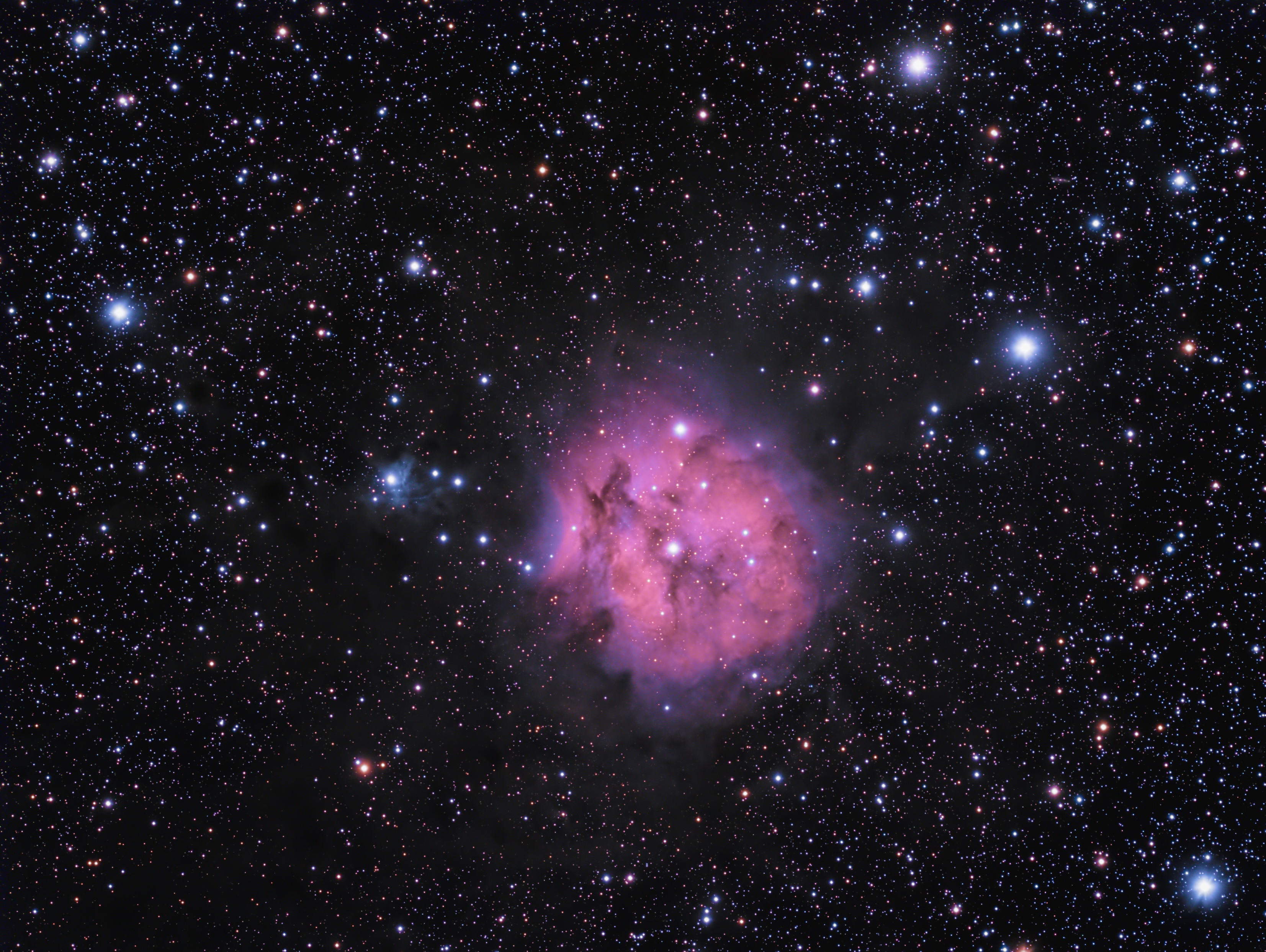Cocoon Nebula (IC 5146)
The Cocoon nebula in the constellation of Cygnus is a beautiful cloud of gas and dust that glows due to the absorption of ultraviolet light from the bright young central star which is then reemitted in the visual part of the spectrum. In addition it also reflects the predominantly blue light from the bright central stars, light which reflects off of the dusty dark nebula that enshrouds it. This Nebula is high in the sky on summer nights and is at a distance of about 4000 light years from the Earth. One of the most massive stars in the region is BD +46 3474, a star of class B1 that is an estimated 14±4 times the mass of our Sun. Nebula like this are regions where new stars are formed, although most of the lower mass stars are still enveloped by dust and only become visible in infrared light. Such “stellar nurseries” are found all along the swath of the Milky Way in the summer sky.
This photograph was taken by Prof. Dr. Joachim Stadel in Bergün during two nights in August 2025 using a Celestron C9.25” Schmidt-Cassegrain Telescope. As part of our Bachelor study program, our students will be able to take images of such Nebulae and many other exciting objects and learn about the physical processes that create them.
